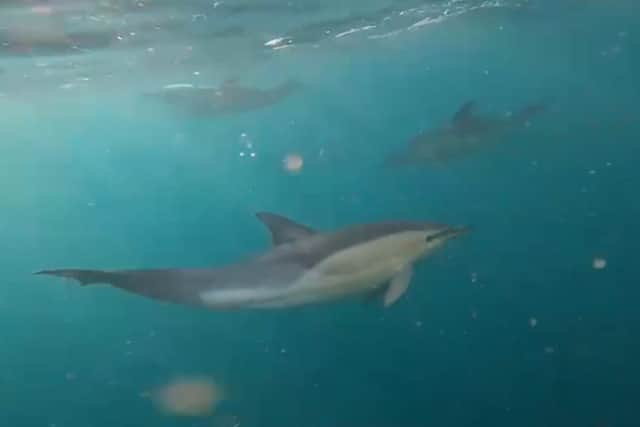'Superpod' of hundreds of dolphins spotted off Sussex coast
and live on Freeview channel 276
Jake Davison spotted the pod of common dolphins swimming ten miles off the coast in Eastbourne last Wednesday (December 6).
Jake regularly films his fishing trips for his YouTube channel, but said he’d never seen that many dolphins at once before.
Advertisement
Hide AdAdvertisement
Hide AdIt's the largest pod seen recorded on video in recent years, according to organisation Sussex Dolphin Project.


"It's very rare to see this many dolphins together in Sussex waters and although we do receive reports of superpods occasionally this is the video evidence that allows us to share this spectacle far and wide,” Thea Taylor, managing director at Sussex Dolphin Project, said.
"Superpods usually form when there is high prey abundance in the area and Jake reported high concentrations of pelagic fish which are schooling in large numbers at this time of year. Unfortunately, pelagic fish are also the target for the Supertrawlers that are currently fishing in the area, putting this pod of dolphins directly in their path."
Common dolphins, which can be spotted all around the UK, are an offshore species but often come close to shore to feed.
Advertisement
Hide AdAdvertisement
Hide AdThe species can be identified by their distinctive color pattern, often described as an ‘hourglass’. They are fast swimmers, able to reach up to 30mph, and regularly ride the bow waves of boats.
Sussex Dolphin Project is committed to protecting local dolphin species through research, awareness and education. The organisation asks anyone who spots the mammals to take a photo or video and send it in with location details to help inform research.